Calamity War - Tumblr Posts
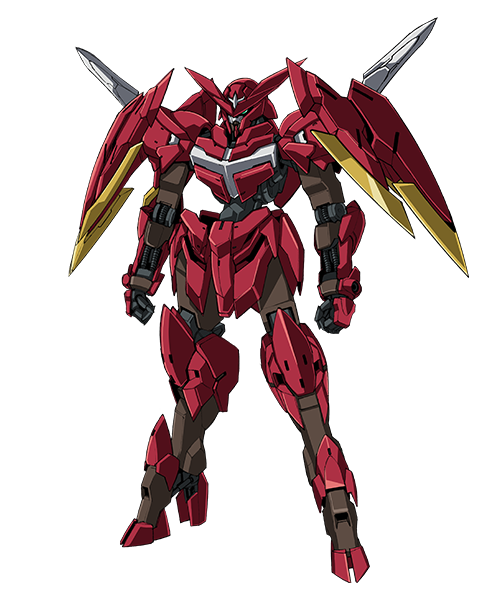
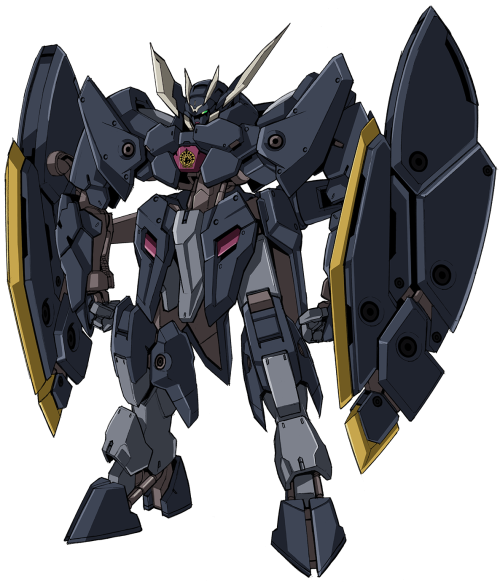
A twofer today, just some general impressions on the ASW-G-16 Gundam Zepar (left) and the AWS-G-61 Gundam Zagan. I still haven’t watched Urdr hunt unfortunately, so I’ll be mostly talking about Zagan’s design, as opposed to anything that goes on in-series.
Another reason I’m pairing these together is because they’re both Post Disaster Gundam units, that have a two-syllable name beginning with a Z and a serial number that has a 6 in it. I’ve been able to remember them by the fact that the Zepar is Zippy. And that the Zagan has nothing to do with Carl Sagan.
Moving on from naming conventions, what do I think of them? Starting with the Zagan, I like the weight it brings to the table, it feels like it could compete with other heavyweights without much difficulty, essentially functioning as a giant can-opener to the mobile armours. It should be noted that with the possible exception of Agnika Kaeru himself, the Issues were the most prolific killer of Mobile Armours during the Calamity War. Presumably some of that was by dint of its pilot, but the Zagan cannot be discounted. It’s possible the apparent focus on defence aided in its survivability, enabling it to cope with battles of attrition better, functioning as an anvil to the other Gundam Frames’ hammer. It’s also possible that it’s missing some armament, since the hands are free. I know there’s precedent for knuckledusters in IBO, but it only being armed with the shields feels a little odd.
The design specifically reminds me of the Gremory (most likely the armour) and the Abyss Gundam from Seed Destiny (colouration and bulk, though I always remember it bigger than it actually is)
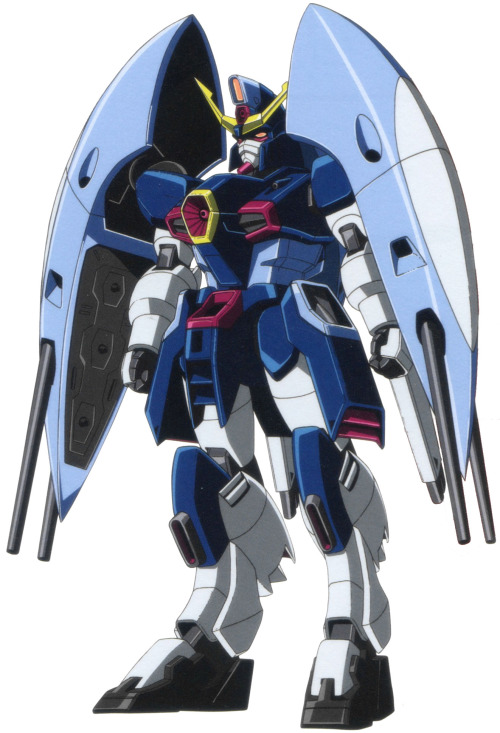
The Zepar I have considerably less to say on - it’s a nice design, agile and suited to closing the distance and stabbing things, but I do want to talk about it in relation to House Kujan, Specifically Iok Kujan.

Iok is……hm. He’s essentially a perfect example of somebody you don’t want in command. He’s a twit, and furthermore, he’s a dangerous twit, since his actions have a tendency to backfire on literally everyone besides himself. But let’s walk back a little. Who is Iok in relation to the story?
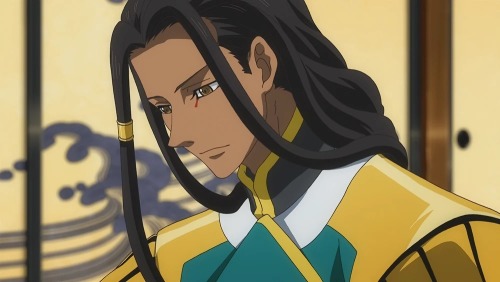
Iok Kujan is the heir to House Kujan of Gjallarhorn’s Seven Stars, the Seven Noble Families that wield the most power in Gjallarhorn, as McGillis, Gaelio, Carta and Rustal are to each of their houses (and of course Nemo, Elek and Gargin, but they’re less focused on). He only ascended to the position fairly recently, but everyone has high hopes for him since his late father was beloved.
Unfortunately, he’s really bad at it. He’s reckless, callous of those he’s fighting against and is absolutely unable to recognise his own failures.
@wordsandrobots has done an excellent analysis on Iok which I’m just going to link to here, since it’s very good:
But the crux of Iok is that he represents a great many of the failings of nobility - he’s incompetent, he’s unqualified and he displays a lack of care for how his actions effect others - not out of malice, but out of stupidity. He is a walking talking, killing example of how promoting based on blood rather than ability is such a poor idea.

But then look at the Zepar. Look at how it stands, how it moves. There’s a poise to it, an elegance, a sense of nobility. It’s armed with a sword and shield - simple, yes, but something that focuses on defence, on protection. Even the way it fights seems to be in pushing the enemy away from something, protecting it. So I would say that if Iok is representative of the realities of nobility - the incompetence and disregard for others, then the Zepar is the romanticisation of it - of a noble, red-armoured knight who would protect the people. It also represents how far the Kujan family has come since the Calamity War - Once a great and loved pilot who fought at the frontlines using a Gundam Frame, to a lacking and foolish one who fights from the rear and has to be bailed out at the cost of his subordinates lives. (I know Iok’s father didn’t pilot the Zepar, but it ties in with the theme of Iok being the end result of a lineage, rather than the beginnings).
It also draws attention to the Gjallarhorn’s meritocratic roots - Embrilla Kujan was able to slay multiple mobile armours using this machine, whereas Iok is too blinded by his own self-importance to recognise the threat that they pose, to the point he severely underestimates what it will take to kill one.
*The Following contains spoilers for Gundam Iron Blooded Orphans Urdr Hunt*
The *other* follow-up point to my prior Urdr Hunt Post.

Okay, so the Gundam Marchosias was apparently scary enough to give a mobile armour PTSD.
That is RAD AS HELL.
Let’s analyse that, shall we?
So the Gundam Marchosias was apparently able to beat Harael, a Mobile Armour from the Calamity War that is programmed to kill humans and has no brain, will or personality of its own, badly enough that when it sees the Hajiroboshi 325-ish years later, it instantly recognises its killer and has a flashback to the Calamity War, leading to it desperately trying to kill the Hajiroboshi (which for its part seems to recognise its victim).
Absolutely fantastic.


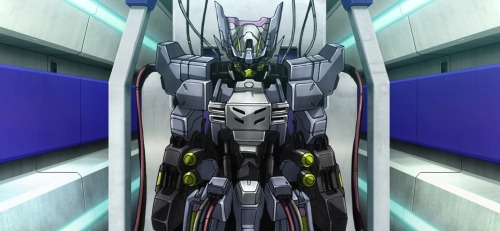
Just a little on the Gundam Asmoday/Asmodeus today (it apparently could’ve been called the Ashmodai, which is neat).
Okay, so the ASW-G-32 Gundam Asmoday is found by Wistario the Erda II crew (specifically Sinister) inside an Aridne Cocoon in the Debris zone. It’s specifically noted to be essentially brand new, with no records of it fighting in the calamity war, and a full complement of weapons ready to go. Based on this, and the fact that it seems to have its reactor hooked up to the cocoon, we can gauge one of two things. Either;
The Gundam wasn’t completed until either very late in the Calamity War, or just after, and thus didn’t have an opportunity to fight against the mobile armours.
This Cocoon relay station was apparently important enough to dedicate a Gundam frame just to keep it operational.
Based on the assumption that a bunch of regular ahab reactors would probably have done the job just fine, I think it’s more likely to be a case of it being completed late.
What makes this interesting is that we only know of one other Gundam frame that was completed late in the calamity war:
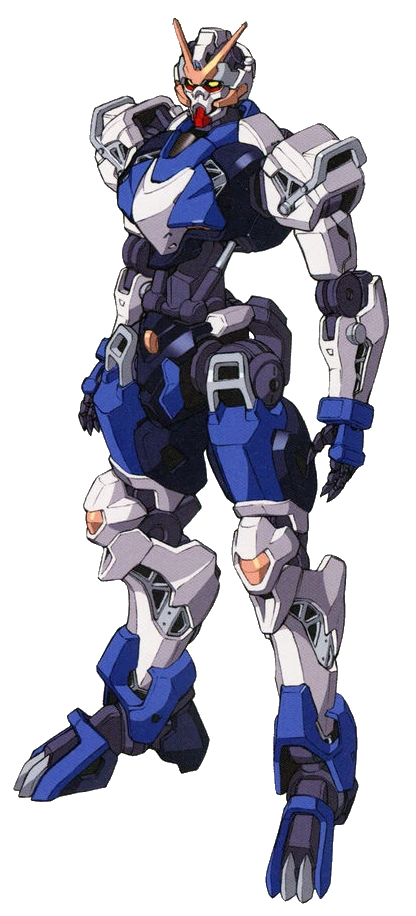
The ASW-G-71 Gundam Dantalion.
Now, because this is both at the end of the series (71/72) and because it’s stated that the Dantalion had been completed late, I had previously assumed that the Gundam Frames were completed sequentially. So, the ever-elusive ASW-G-70 Gundam Seere would have been completed just prior to the Dantalion, and the 72nd Gundam would have been completed after, possibly even being completed postwar (At a guess, either the Gundam Andromalius or Gundam Pruflas/Bufas - I’d be very interested in know what happened to it, since it’s be the most likely source as to any clue to the end of the calamity war and it’s immediate aftermath). But the Asmodeus implies something quite different. Unless its deployment was delayed for whatever reason, then it’s evidence that the Gundam frames may not have been built sequentially. (I’m not sure which it would be - it doesn’t seem to have any equipment that’d be too difficult to work with, being structured as a fairly direct combatant - gigant javelin as a sort of whip-sword to attack from a distance, smoke grenades and then grand tonfa’s up close, but then there’s plenty of other reasons for it to not have seen combat).
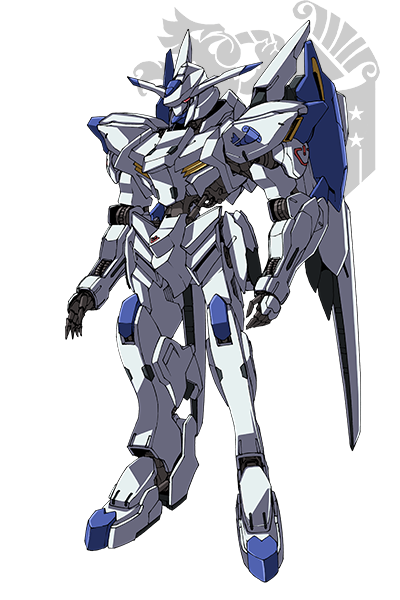
We do, however, know that Bael was the first. Add to that the seeming increase in complexity as the numbers climb (Dantalion appears simple but it has a bunch of add-on equipment not shown above, a lot of the 50’s and 60’s-series Gundams have fancy designs or systems, especially compared to the relative simplicity of the 00’s and 10’s), and we can guess that they were at least designed sequentially, with Asmoday’s presumed delay being an exception.
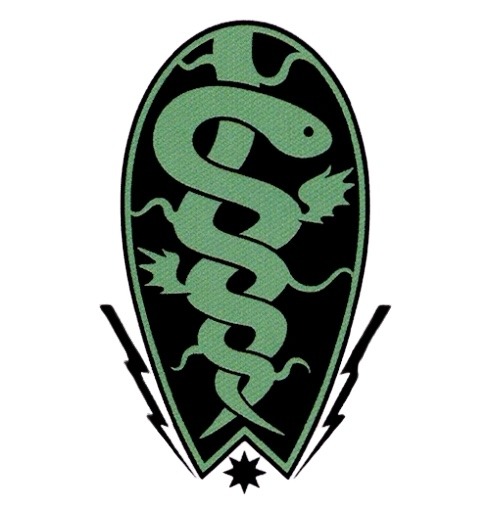

However, what I also think is interesting is where it was found. Inside an Ariadne Network Cocoon, big enough to be used as a harbour, administrative and let’s face it defensive point, in the network. Administered by the Falk Family (presumably headed by either Kalf Falk or his immediate successor), who already possess a Gundam Frame to their name - the Gundam Gamigin (shown above).
So what was the Asmodeus, for all intents and purposes a “phantom machine”, which exists on paper but was never actually deployed, doing there? Each Seven Stars Family or similar organisation within Gjallarhorn has precisely one Gundam Frame to their name, with no evidence of one family using multiple frames. I find it particularly interesting that it’s the Falk’s of all people that seem to have this frame - they’re one of the two families we know the absolute least about, the other being the Baklazan’s. Even then, most of the information we do know is what can be inferred from their Urdr Hunt point and their Gundam Frame. The only real supposition we can make is that they’re probably the oldest out of the Seven Stars - assuming no family got multiple Gundam Frames during the calamity war (which feels a fair assumption to make, given that we know absolutely nothing about any frames that were destroyed, implying no-ones really around to keep those records), then the ASW-G-04 Gamigin Gundam was likely deployed the earliest out of all the Seven Stars Gundam Frames, shortly after Bael (again, assuming sequential deployment). So it’s possible that the Falks were the longest surviving active participants in the Calamity war, besides Agnika Kaeru himself, of course. But it’s unclear why they would end up with another Gundam frame, and then not use it. A few possibilities:
The Intended Pilot for the Asmoday was killed before it could reach them, and the Falk’s didn’t have another pilot on hand to use it.
There was a Cocoon was involved in transporting the Gundams to their pilots, and it was kept at the cocoon until it’s recipient could be sorted out.
The Falks wanted extra “insurance” of their position once the Calamity War was over, and arranged for a second Gundam frame to be assigned to them somehow.
The Asmoday had nothing to do with the Falks, and it was left at the Cocoon by N as prize for Urdr Hunt participants.
It was salvaged from its transport during the war, and restored by the Falks.
In short, I don’t know why it was there and we’re probably not going to find out anytime soon, but it’s fun to think about. I would also like to point out that the Asmoday was also just…. Left there, which feels like it must have been purposeful in some way, but also means that the Falk’s didn’t recover it in the intervening 300 years.
My it sure is nice how, because I clearly tag things, tumblr has no problem with finding my old posts, isn’t it?
Sure is great when you want to return to an old topic, you can easily reference an older post, isn’t it?
Anyway, I was thinking about some of my favourite mobile suits recently, and more specifically how they fight.
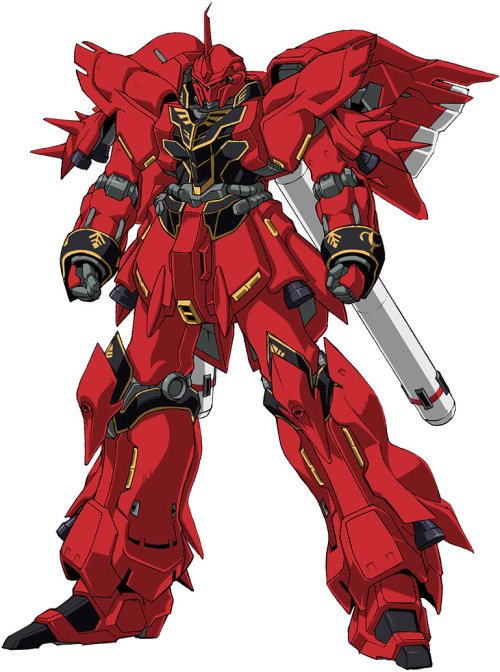

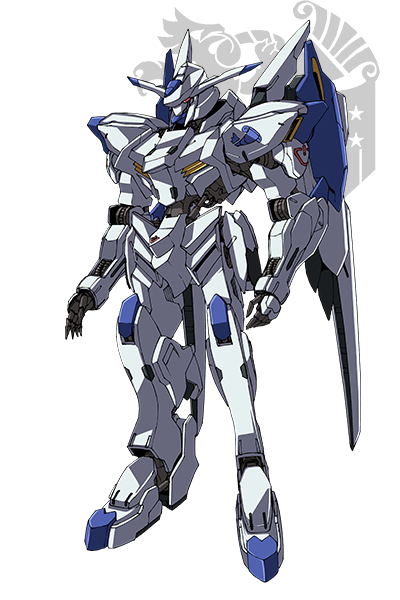
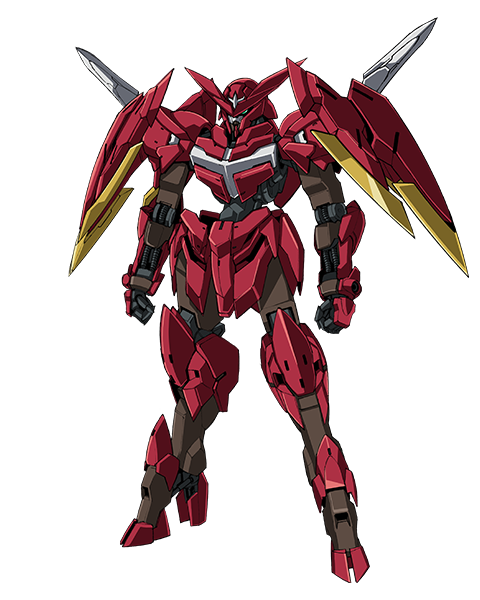
The Sinanju and Sinanju Stein (strictly speaking that’s unit 2 above, but the Sinanju Stein Unit 1 only shows up physically once anyways, so I tend to conflate the two) from Universal Century, and the Gundams Bael and Zepar from Post Disaster. The Bael and Sinanju’s are thematically and functionally similar, if not so much visually, since they’re piloted by the series resident Char Clones, Full Frontal and Mcgillis Fareed respectively, and thus have a similar fighting style - high mobility and very flashy, typically dodging with minimal effort and taking out scores of foes near-effortlessly. The Sinanju Stein (Unit 2) certainly could fight like that, but its pilot Zoltan Akkanekan is…… not in a great place mentally, and as such he tends to be more brutish, always pushing the attack and closing ranks with his enemy very quickly (we only see him fight once in the Sinanju Stein before it docks with the Neo Zeong II, so it’s possible that his aggression is more due to the enemy being a Gundam, as opposed to any real strategy). The Gundam Zepar we have even less information on, but since we know both that it doesn’t have any ranged weaponry, and that most of the emphasis seems to be on the shield, we can guess it would want to get close fairly quickly, and would be well-prepared for a reprisal.

And this reminded me of something I mentioned previously when discussing non-Gundam Mecha series - I like when we know the “thesis” of the mecha. I like when we know why they were built and what the in-universe theory was in their construction (Or at the very least, we can guess, as with The Big O). It makes the world feel realer to me, and don’t get me wrong, I love giant robots, but it feels wonderfully cohesive when there’s an in-universe justification. I don’t typically forget the out-of-universe justification “to sell toys” but it feels less “Johnson, quarterly earnings aren’t looking good, make a property we can merchandise things out of” and more “Hey, this guy’s got an idea for a cool show about robots, maybe there’ll be a market for cool toys there?”.
Weird tangent on the relationship between entertainment and merchandising aside, I like Universal Century because it’s got a strong “thesis” - mobile suits were designed primarily as an anti-ship weapon that would engage at visual range, due to the effects of Minovsky particles rendering most long-range weapons difficult to aim. They’re fast, and carry handheld weaponry both for ease of use, maintenance and operability and they’re an extension of “armoured space suits”. There’s even the military angle of “a secret weapon to to win us the war against a foe that could beat us conventionally”, and I’d assumed that, with a few exceptions like Wing and G Gundam, most of Gundam followed that same thesis.

However, I realised that’s perhaps not quite true with Iron-Blooded Orphans (or at least it’d be interesting to consider why it might not be true). The above graph is an illustration of the breakdown of forces used in the calamity war, and how they were deployed depending on the field. Quote: The unit formation deployed against the mobile armors depended on where the battlefield was. On Earth and Mars, the Gundam Frames served as the main fighting units, and they destroyed the mobile armors one by one with assistance from other mobile suits and supporting units. In space, the Dáinsleifs were used as the main weapon, and were assisted by mobile suits, including Gundam Frames, and other supporting units. On the Moon, mobile suit teams like the one deployed on Earth and Mars were also used in addition to the aforementioned use of the Dáinsleif.
So I got to wondering if Post Disaster (or I guess Current Disaster) mobile suits had a different development ethos, since they were deployed largely terrestrially.

Mobile suits were only used during the Middle and Late stages of the war, which implies they were developed during it. The above Rodi and Hexa Frames were developed first, with the Gundam And Valkyrja Frames following in the later stages of the War. It’s also stated that, quote: The beginning of the Calamity War was the result of AI-equipped, self-sustaining weapon systems going out of control. Before the outbreak of the Calamity War, automated machinery was a symbol of wealth and abundance, and humans were actively promoting the automation of wars. With the risk of losing valuable soldiers reduced as the weapons were AI operated, and the introduction of the semi-permanent Ahab Reactor as a power source, mobile armors became the ideal weapon that can fight efficiently and persistently. So, it’s possible that after the Mobile Armours were unleashed, there was a rush to adapt previously autonomous weaponry into something human-controlled, with the Rodi and Hexa Frames representing these early steps. Furthermore, it’s stated that Mobile Armours acquired Nanolaminate Armour, so beam weaponry would presumably have been used in the early stages of the war.
So, could Mobile Suits in IBO be autonomous weaponry adapted for human use, as opposed to the Universal Century’s “Armoured Space Suits” line of thinking? We know that Alaya-Vijinana works best with forms closer to the human form - hence the Gundam Frames being constructed as close to the human form as possible. Another angle might be that of upsized Knights, here to slay the mechanical monsters that threaten humanity.
So it’s an interesting angle compared between the series - in one, mobile suits were built for wars in space, fought between nations. In the other, mobile suits were built to be used terrestrially, in response the threat of extinction by mechanical foes humanity unwittingly unleashed upon itself.
(Also, it’s interesting to look at how common mobile armours and automated weaponry were in the pre-post disaster setting, since I just imagine Treize Kushrenada from Gundam Wing being distinctly unhappy)